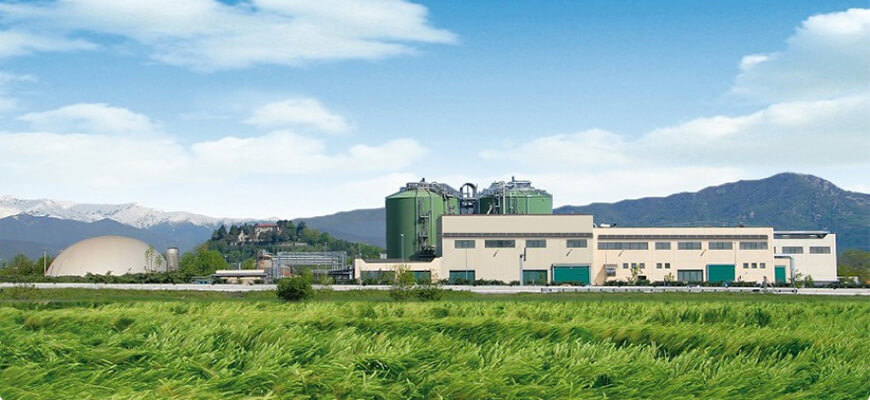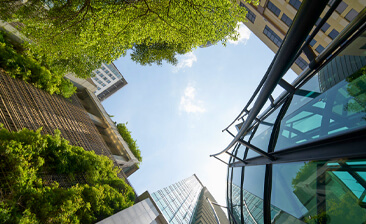
Acea for World Energy Saving Day
Biogas is an energy source that originates from natural processes that are accelerated and controlled as part of anaerobic digestion of organic fractions and the purification of wastewater. This phenomenon occurs when anaerobic microorganisms decompose organic matter in the absence of oxygen, producing biogas that is a mixture consisting mainly of methane and carbon dioxide.
Acea Ambiente has recognised the potential of this natural process and operates industrial plants that contribute to biogas production through an integrated cycle of anaerobic digestion and composting of organic waste, subsequently generating electricity and thermal energy through cogeneration.
Power generation from biogas is a complex process that follows different steps, depending on the type of plant.
Non-recoverable waste, after undergoing the treatment process, is sent to the landfill and deposited in the management lots, where it undergoes two further processes: compaction and subsequent covering with clay. |
|
Under these conditions, anaerobic digestion takes place, which lasts about 21 days, and the waste degradation process generates biogas. |
|
The biogas produced powers a motor connected to an electric generator that produces electricity. At the same time, the heat produced during the motor operation can be captured and used for heating or other applications that require thermal energy. |
|
The energy produced from the combustion of the biogas is mainly used by the plant itself, and the excess is fed into the electric grid. |
Within specific integrated anaerobic digestion and composting plants, biogas is produced through 4 steps:
Within specific integrated anaerobic digestion and composting plants, biogas is produced through 5 steps:

The biogas production process is an important activity in the waste management and utilisation cycle and is a collective process. In addition to the important role played by biogas plants operated by Acea Ambiente, there is essential collaboration between citizens and the industry.
Accurate and well-executed separate collection by citizens is indeed a key element in increasing the efficiency of these facilities. For example, proper collection of organic, or "wet," waste can optimise biogas production and significantly reduce waste sent to final disposal as well as help produce a high-quality compost.
This kind of collaboration between the community and industry system is a crucial step toward sustainable waste management and efficient use of resources.
It is also important to emphasise that biogas, which originates as a natural result of the anaerobic decomposition of organic matter, is not a phenomenon limited only to anaerobic digestion and composting plants of OFMSW, but can also occur in landfills and liquid waste treatment plants.
Discover the latest news and initiatives of the Acea Group

Acea for World Energy Saving Day

Visit the virtual museum about the history of the Acea Group

The channel for the commercial requests on land urbanisation

Acea turns the spotlight on the Rome Film Festival 2023

Acea is in the "Gold class" in the .trust research

Read more about our culture of inclusiveness